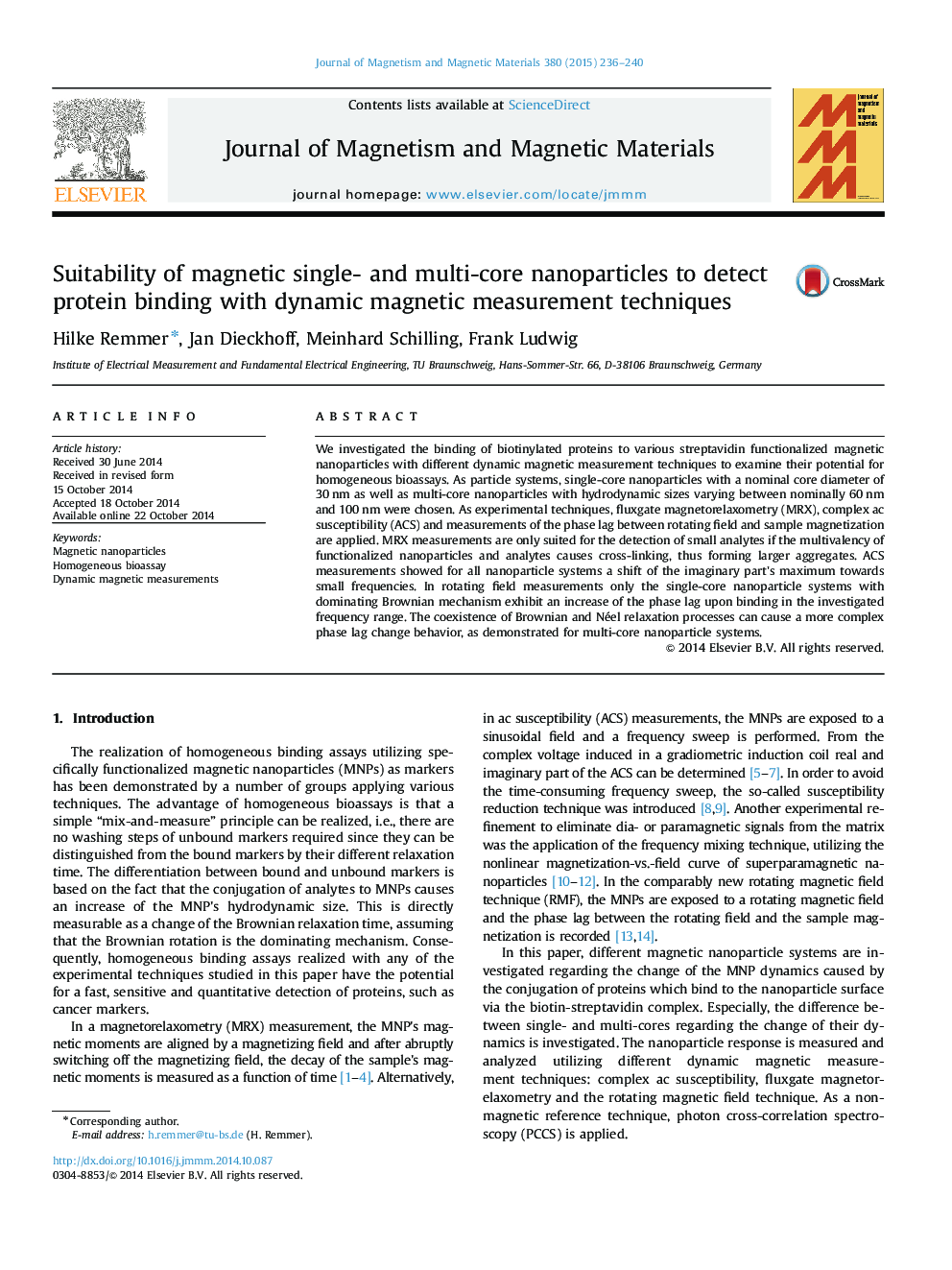| Article ID | Journal | Published Year | Pages | File Type |
|---|---|---|---|---|
| 1798887 | Journal of Magnetism and Magnetic Materials | 2015 | 5 Pages |
•Cealization of homogeneous magnetic bioassays using different magnetic techniques.•Comparison of single- and multi-core nanoparticle systems.•ac Susceptibility favorable for detection of small analytes.•Magnetorelaxometry favorable for detection of large analytes or cross-linking assays.
We investigated the binding of biotinylated proteins to various streptavidin functionalized magnetic nanoparticles with different dynamic magnetic measurement techniques to examine their potential for homogeneous bioassays. As particle systems, single-core nanoparticles with a nominal core diameter of 30 nm as well as multi-core nanoparticles with hydrodynamic sizes varying between nominally 60 nm and 100 nm were chosen. As experimental techniques, fluxgate magnetorelaxometry (MRX), complex ac susceptibility (ACS) and measurements of the phase lag between rotating field and sample magnetization are applied. MRX measurements are only suited for the detection of small analytes if the multivalency of functionalized nanoparticles and analytes causes cross-linking, thus forming larger aggregates. ACS measurements showed for all nanoparticle systems a shift of the imaginary part's maximum towards small frequencies. In rotating field measurements only the single-core nanoparticle systems with dominating Brownian mechanism exhibit an increase of the phase lag upon binding in the investigated frequency range. The coexistence of Brownian and Néel relaxation processes can cause a more complex phase lag change behavior, as demonstrated for multi-core nanoparticle systems.
